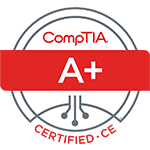Artificial intelligence (AI) is quickly changing many industries, bringing new tools and automation opportunities. However, as AI becomes a bigger part of our systems, it also brings new risks. The data that AI systems collect and use is increasingly becoming a target for breaches.
A recent study found that 77% of businesses have had their AI systems breached in the last year. These breaches are a major risk because they can expose sensitive data, steal intellectual property, and interrupt important business processes.
But there’s no need to panic just yet. Let’s look into why AI data breaches are becoming more common and what you can do to protect your company’s information.
Why are AI Data Breaches Happening More Often?
Artificial intelligence (AI) data breaches are becoming more common due to several factors:
- Expanding Attack Surface: As AI becomes more widespread, the number of potential targets for attackers grows. Vulnerabilities in AI models, data pipelines, and the infrastructure that supports them are all potential entry points for hackers.
- Data as a Target: AI relies heavily on data. The vast amounts of data used for training and operating AI, including customer details, business secrets, and personal employee information, become attractive targets for theft.
- The “Black Box” Problem: Many AI models are complex and not easily understood, making it hard to find vulnerabilities or track where data goes. This opacity complicates efforts to secure AI systems against breaches.
- Advanced Attack Techniques: Cybercriminals are continuously developing new methods to exploit security weaknesses. For example, adversarial attacks can trick AI models into making errors or revealing sensitive information.
What Kind of Impact do AI Data Breaches Have?
The consequences of AI data breaches can unfortunately be severe and wide-ranging:
- Financial Losses: Breaches can result in large fines, costly lawsuits, and damage to your reputation, all of which can affect your profits.
- Disrupted Operations: AI systems are crucial to many business operations. A breach can interrupt these systems, reducing productivity and harming customer service.
- Intellectual Property Theft: AI models are valuable intellectual properties. If these models are stolen, it could give competitors an unfair advantage.
- Privacy Concerns: Breaches can expose sensitive personal information of customers and employees, leading to privacy issues and possible regulatory penalties.
Protecting Your Company from AI Data Breaches
Thankfully, you can take several steps to reduce the risk of AI data breaches. Here are some effective strategies:
1. Data Governance
Implement strong data governance practices, which should include:
- Classifying and labeling data according to its sensitivity.
- Setting clear controls over who can access data.
- Continuously monitoring how data is used.
2. Security by Design
Incorporate security measures right from the start of AI development or when integrating AI into your systems. Make sure to include:
- Secure coding techniques.
- Regular vulnerability assessments.
- Comprehensive penetration testing to find and fix security weaknesses.
3. Model Explainability
Adopt explainable AI (XAI) techniques to make your AI models more transparent. This helps you understand how models make decisions and spot any vulnerabilities or biases.
4. Threat Modeling
Regularly perform threat modeling to pinpoint potential security weaknesses in your AI systems and data flows. This process helps prioritize which vulnerabilities to address first based on their risk level.
5. Employee Training
Train your employees on AI security risks and proper data handling procedures. Ensure they can recognize and report any suspicious activities they encounter.
6. Security Patch Management
Regularly update all your AI software and hardware with the latest security patches. Systems that are not up-to-date are more susceptible to attacks using known security flaws, which can compromise your data.
7. Security Testing
Frequently perform security checks on your AI models and the pathways that data travels through. This proactive step helps find weaknesses before they can be exploited by cybercriminals.
8. Stay Informed
Because this is such an evolving industry, it’s important to make sure you’re up-to-date on emerging AI security threats and protective measures. Some great ways to stay informed include:
- Subscribing to trusted cybersecurity newsletters
- Participating in industry conferences
- Engaging in online workshops related to AI and security
Collaborating for Stronger AI Security
Think about teaming up with a trusted IT provider who specializes in AI security. They can provide expert threat detection, vulnerability assessments, and customized penetration testing for AI systems.
Also, consider using software from vendors that feature AI-powered tools for detecting anomalies. These tools are designed to examine data patterns and spot unusual activities that could indicate a security breach.
Strengthen Your Defenses Against AI Data Breaches
AI brings many advantages, but ignoring its security risks could put your company at risk. Do you need expert help to tackle AI cybersecurity challenges?
Our specialists will review your entire IT setup, including both AI and traditional components. We’ll implement proactive monitoring and protection strategies to safeguard your systems. Our goal is to ensure your peace of mind in a risky digital world.
Reach out to us today to discuss how we can boost your cybersecurity.
Book My 17-Minute Call





